Looking to train your team? Combine e-learning with our customised face to face training or online workshops.
Why opt for blended learning:

Expert Trainers:
Learn and interact with the International Chamber of Commerce (ICC’s) unrivalled roster of international experts either face-to-face or via live webinar.

Personalised Sessions:
Tailor-made programme to equip participants with the know-how to manage multi-dimensional aspects of the subject matter in a supportive environment.

Small Groups:
Deepen your knowledge with small ‘Working Groups’ which facilitate enriching, inspiring and interactive classes.

Interactive Learning:
Our sessions include quizzes, scenario discussions with other students and lectures are followed by Q&As with the trainer.

Improve Effectiveness: Self-paced online learning, with concepts being reinforced in a face-to-face/live classroom setting.

Industry Standard:
Earn an internationally recognised ICC certificate signed by the ICC Secretary General. Use it to signal your expertise to clients.
These Companies Use ICC Academy to Train Their Staff








Overview
In today’s ever-evolving global trade landscape, it is important that organisations stay up to date with the latest developments. As the educational arm of the International Chamber of Commerce (ICC), we strive to build the capabilities of practitioners by equipping them with the knowledge and know-how needed to successfully break into international markets.
To cater to the ‘new normal’, and at the same time ensuring we continue to offer learning solutions to suit the current requirements, the ICC Academy is rolling out a new learning format. Known as ‘blended learning’, this knowledge approach offers online learning opportunities along with face-to- face trainings/live classrooms, that serves as a catalyst for real professional transformation.
Customised training allows participants to have a tailored and in-depth learning experience. With online learning, your employees can overcome time constraints and study at a pace that is convenient to them. Supplementing it with face to face training or live webinar provides them the opportunity for group discussion, peer feedback and Q&A sessions with the instructor.
Customised Training Topics (more available on request)

Online learning

Face-to-face training

Tailor-made sessions

ICC-approved trainers

Self-paced learning

Globally-recognised certificates
- Identify clients that are active in domestic and/or international markets and have a potential need to optimize their working capital efficiency.
- Deploy a robust, structured approach to the identification of a client’s priorities and decision criteria with regard to the risk mitigation, funding and payment needs arising out of the trading activities.
- Use advanced quantitative and qualitative techniques to gain an in-depth understanding of a client’s physical trade practices and aspirations, financial arrangements and resulting risk mitigation, funding and settlement needs.
- Understand the risk considerations from both a client perspective and a finance provider perspective.
- Identify and propose the appropriate trade and supply chain finance techniques and solutions that best meet the client’s needs.
- Ensure that all products offered to a client meet defined and recognized needs, are fit-for-purpose and deliver transparency and fair-value to the client.
- Learn how to identify several of the major variations and risks and benefits associated with this form of financing. Our trade finance training will help you get a grasp of the basic concepts
- Understand how each trade finance solution offered by banks meets customers’ needs under different circumstances.
- Appreciate the intricacies of the trade finance solutions in various forms (e.g., back-to-back LC, front-to-back LC, transferable LC, revolving LC, red clause LC, confirmation) – how they work, what the risks and mitigants are.
- Be able to apply the appropriate ICC rules in different scenarios in the best interests of the bank and the customer.
- Understand how trade finance solutions offered by banks meet customers’ needs under different circumstances.
- Appreciate the intricacies of the trade finance solutions in various forms (e.g., back-to-back LC, front-to-back LC, transferable LC, revolving LC, red clause LC, confirmation) – how they work, what the risks and mitigants are, how they relate to customers’ supply chain and working capital objectives.
- Be able to apply the knowledge to identify appropriate solutions that match customers’ needs, thus serving the best interests of the bank and the customers.
- Introduction: what do both rules say?
- UCP pluses for use with SBLCs
- UCP minuses for the use with SBLCs: Articles inapt to use
- Articles that are incomplete, inadequate and irrelevant
- Provisions overlooked in UCP with regard to SBLCs
- Examples: Opinions or DocDex cases about SBLCs
- Understand the importance of the documentary letter of credit in enabling trade, the versatility of this proven instrument in addressing a range of market conditions and a variety of client needs
- You will also appreciate the strengths of this unique financial instrument, as well as the weaknesses – and a couple of misconceptions
- This course provides a practical overview of the first type of trade financing instrument, which uses shipping documents and bank inter-mediation
- You will learn how to describe the two types of Documentary Collections, portray the cycle in its entirety, and understand the role and perspective of a Relationship Manager in this cycle
- This course will give you a high-level overview of the compliance obligations of financial institutions engaged in trade finance including the “Know Your Customer” requirements
- Our trade finance training will help you understand the implications of sanctions and embargoes on trade finance
- Identify key elements of direct and indirect guarantees.
- Distinguish parties to a guarantee and their legal relationship to each other.
- Identify the parties that can issue a guarantee and the laws or rules that should be applied to a guarantee.
- Discuss the modification of the terms and conditions of a guarantee.
- Learn how to identify several of the major variations and risks and benefits associated with this form of financing. Our trade finance training will help you get a grasp of the basic concepts
- Understand global trade, its complexities and attractiveness to criminals, TBML typologies, warning signs, identification & assessment of financial crime risks and best practices.
- Defining financial crime and its cost
- Global trade & associated financial crime risks (AML, Sanctions, Tax-Evasion, TBML, Fraud, Embargoes)
- Tarde finance and its attractiveness to criminals
- Overview and deep dive of TBML red flags
- Real-life examples (how to identify, assess and mitigate risk)
- Developing crucial skills of applying spirit of regulatory requirements, risk-based approach and performing holistic AML risk assessment.
- Why perform AML Risk Assessment
- Understanding key risk pillars
- Country and Industry Risk Assessment
- Product Risk Assessment
- Negative News Risk Assessment
- UBO Risk Assessment
- Sanctions Risk Assessment
- Developing Risk Rating Methodology
- Critical Decision Making
- Have a greater understanding of the different initiatives relating to the digitisation of trade and supply chain finance
- Understand how digitisation can enhance their financing solutions and support better process management (risk, security, efficiency) and compliance
- Understand the changing priorities of the management of supply chains and how banks and other funders can support their ESG priorities
- Overview and Evolution of Incoterms®
- Pre-Incoterms® Rules
- Reasons for using Incoterms®
- Changes: the difference between old and new terms
- Introduction of new Incoterms®
- Using Incoterms® in business negotiation
- 2020 updates and the impact on trade
- Understanding the process of importing
- The Import Process
- Incoterms® Rules
- Insurance payment options
- Tariffs
- Freight forwarders role
- Understanding the process of importing
- Supplier Selection Criteria
- SAD C88 Completion Guid
- T1, T2 status goods
- CPC Codes
- VAT Value Adjustments
- Intrastate
- Understanding the basics of Exporting.
- Export Process
- Content
- Custom export declaration
- WTO
- Rules of Origin
- Incoterms® Rules
- Understanding the basics of Advanced Exporting
- Explanation of WTO / WCO / ICC
- Tariff codes and duty
- Rules of Orgin
- ATA Canet
- The importance of ECSI
- Provide an overview of import and export development
- Understand international marketing and barriers
- Understand Export and Import financing processes
- Explain Import and Export documentation process
- Learn about issues with insurance when trading
- Understand risk management in Import and Export
- Explain the historical development of Free Trade Agreements (FTAs) from the General Agreement on Tariffs and Trade (GATT) to the World Trade Organization (WTO).
- Explains types of FTAs.
- Understand the tangible benefits and cost savings using Trade in Goods clauses.
- Explain the process of benefiting from the Rules of Origin.
- Understand types of Rules of Origin.
- Prepare the documentation for Customs declaration and Cost Statements.
- Understand the value chain for trade facilitation.
- Understanding Customs procedures for Importing and Exporting
- Incoterms
- Insurance
- International Documents
- Invoices
- Transport Documents
- Proof of Export
- Customs Compliance
- Understand the impact of commercial law in starting a business
- Understand the types of business setup
- Understand the responsibilities of officers in company
- Know the basics of contract law, remedies and discharge
- Understand basics of Intellectual Property Law
- Understand the impact of commercial law in starting a business
- Understand the types of business setup
- Understand the responsibilities of officers in company
- Know the basics of contract law, remedies and discharge
- Understand basics of Intellectual Property Law
- Understand the importance of developing legal agreements
- Gain knowledge on the roles and functions of contract manager
- Understand the process writing contract contents: obligations and liabilities
- Explain issues of misrepresentation
- Understand the types of remedies
- Explain different types of termination of contracts
- Understanding common types of export credit insurance products(policies)
- What is and why use export credit insurance?
- Political and Commercial Risks.
- Primary types of trade credit.
- Types of insurers and credit insurance policies.
- General overview of common types of export credit insurance products (e.g., single risk, whole-turnover, special products).
- Financing exports using credit insurance
- Client finance solutions with export credit insurance
- Reporting and risk mitigation
- Credit management and policy obligations (policy management)
- Claims and indemnification
- When and how to use credit insurance for working capital (trade) finance
Blended Learning for Individuals
If you are not part of a corporate team but like the idea of combining online learning with face-to-face training on a particular topic or to prep for your certifications, please register your interest here. As soon as there is a class/session available for a group we will be in touch.
